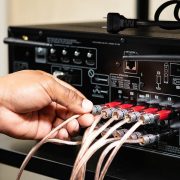If you’re working on an electronics project, then there’s a good chance that you’ll need a bridge rectifier. The bridge rectifier is a common aspect of electronic power supplies – with its essential feature being the polarity of the output always being the same, no matter what input it is given. Below, we explore how you can build a bridge rectifier that will last.
What is a bridge rectifier?
When you’re working with electronics, one of the most popular ways to use semiconductor diodes is to convert an alternating current (AC) signal of any frequency, to a direct current (DC) signal. This can help you power electronic devices rather than batteries. The circuit that carries out this switch is known as a rectifier. Of these, the bridge rectifier is one of the most popular forms to buy as it comes in a pre-arranged module, making it easier to use. This makes it one of the best rectifier diodes to use.
What does it do?
Bridge rectifiers use four diodes to convert AC voltage to DC voltage. The output signal of this circuit will always be of the same polarity regardless of the input polarities of the AC signal. As the main characteristic of a diode is the ability to channel current in only one forward direction, it is able to direct the positive AC ahead and at the same time redirect the negative parts with the help of shunt components to opposite rails. This process makes it a standard AC/DC power supply.
How do I build one?
Building a bridge rectifier is fairly simple. You’ll need to set up a bridge of four diode connections: at the two corners of the bridge, the input AC voltage is applied and at the other two corners of the bridge, the output DC voltage is collected. On top of this, you can add a capacitor to the full-wave bridge rectifier to smooth the pulsating DC and reduce the ripples.
Troubleshooting
As with many electronics projects, using bridge rectifiers can come with problems, and being able to know what to expect can help pre-emptively protect and prevent certain issues quite successfully. Here are some of the most common issues:
Failed open diode
If any of the four diodes used in the bridge has an open-circuit failure this could cause problems for your bridge rectifier. This issue can give you the incorrect voltage output and can put your entire configuration at risk.
A shorted diode
If one of your diodes is showing signs of a small resistance in both directions, it could mean that it’s shorted. Large reverse voltage can cause this problem and make your diode fail.
Filter capacitor aging
Capacitors are used to suppress ripples in the circuit, and they can cause issues when they malfunction. Indeed, as electrolytic capacitors reach the end of their lifespan their capacitance will decrease by about 20 percent. This loss in efficiency can damage your project and cause troubleshooting issues.
A bridge rectifier can benefit your electronics project by a huge amount. And by using high-quality rectifier diodes and capacitors and keeping the above mentioned possible issues in mind, you can ensure that your bridge rectifier will stand the test of time.

















Comments